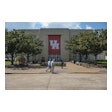Copyright 2017 Collier County Publishing Company
All Rights Reserved
Naples Daily News (Florida)
Collier County has managed to keep one of the lowest bed taxes on either coast of the state for years. Now it's less a question of whether county commissioners will raise the tax, but when they'll raise it and how they'll spend the money.
Commissioners decided last month to study hiking the county's tourist development tax from 4 to 5 percent to build a sports complex off Interstate 75. The idea, supporters say, is to attract more traveling youth leagues and amateur championships, to bring more hotel stays into the eastern side of the county during slower times of the year.
As they decide whether to raise it, commissioners also want to revisit how the money they already collect is spent. There has been a longstanding battle over how much of the roughly $20 million the tax raises each year should go toward replenishing beaches, building bathrooms and upgrading parking lots, and how much should be spent on advertising the county in places like Chicago and Boston.
The percentage was flipped in favor of advertising over the last several years. The pie is now cut up in a way that gives 47 percent of the tax revenue to marketing and running the tourism office, 41 percent to beach renourishment and 12 percent to the county's museums. The bump in advertising was made in 2013 to give promoters enough money to run year-round campaigns.
Since 2013 the number of tourists staying in hotels here has increased. But it hasn't increased as much as the state average over the past several years. The number of visitors here dropped 2 percent from 2015 to 2016, while Florida as a whole had a more than 5 percent increase, county records show.
The visitor numbers aren't justifying the increased dollars to marketing efforts, Commissioner Penny Taylor said.
"The number of visitors here has really plateaued over the last five years, but our spending on marketing increased by 56 percent," Taylor said. "Our marketing contract just jumped from $3.2 million to $5 million. At some point you get to diminishing returns, and I think we're there."
Taylor would like more money to go to beaches, to find ways to make them more resistant to erosion.
"We need resiliency," Taylor said. "We need to start looking into if that means we need wider beaches, or if we can build some dunes. Sand-trucking is not going to be the long-term answer. We need to be proactive because the beaches are so important to our property values, tourism and way of life."
The tourism development council, an advisory board, will revisit the debate over how to spend bed tax dollars at their next meeting. The decision for how it's allocated is ultimately up to commissioners.
For every $1 invested in destination marketing, the county sees a return of $100 spent here, said Jack Wert, tourism director.
Naples City Councilwoman Michelle McLeod, who sits on the tourism development council, said she doesn't believe that beach renourishment should fall on the limited bed tax dollars the county collects.
"The budget is only $21, maybe $22 million a year, and everyone wants a piece of it, because people can say that just about everything here in some form promotes tourism." McCleod said. "I'm not sure that this money is the best solution for beach renourishment."
Commissioner Andy Solis said he was surprised to learn more of the tax wasn't spent directly on beaches here. He said he is in favor of having the tourist development council review how the money is spent.
Voters approved the tourist tax in 1992, when backers suggested that 60 percent of the tax be spent on beach replenishment and inlet dredging and 40 percent be spent on tourism marketing.
Hoteliers and tourism promoters have long opposed increasing the tax, arguing it would put them at a competitive disadvantage, especially for group business. The charge is on top of the sales tax and equates to 4 cents for every dollar spent on overnight stays.
Most counties along Florida's coastlines have a 5 percent tourist tax, including Lee, Sarasota and Charlotte counties. Some, like Miami-Dade and Palm Beach counties, have 6 percent taxes.
Last month commissioners said they were willing to consider raising the tax to 5 percent to build a $60 million to $100 million sports complex. The increase would bring in an estimated $5.2 million a year.
Read More of Today's AB Headlines
Subscribe to Our Daily E-Newsletter
Terms and Conditions Privacy Policy































